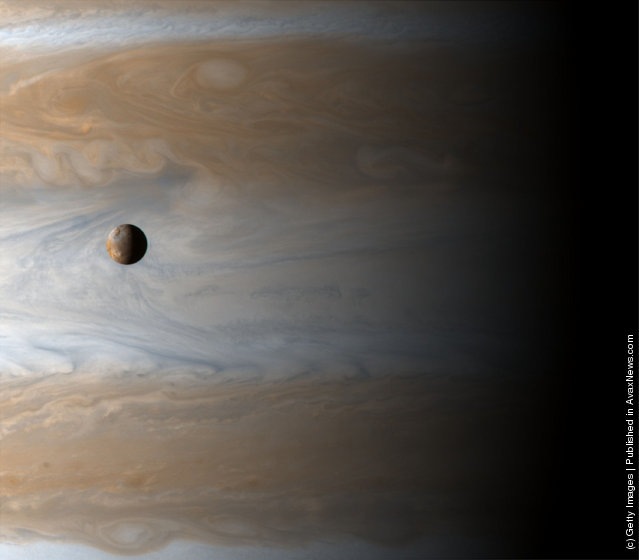
Gliding past the planet Jupiter, the Cassini spacecraft captures this awe inspiring view of active Io, Jupiter's third largest satellite, with the largest gas giant as a backdrop, offering a stunning demonstration of the ruling planet's relative size, April 20, 2001. The Cassini spacecraft itself was about 10 million kilometers from Jupiter when recording the image data. (Photo courtesy of NASA/Newsmakers)
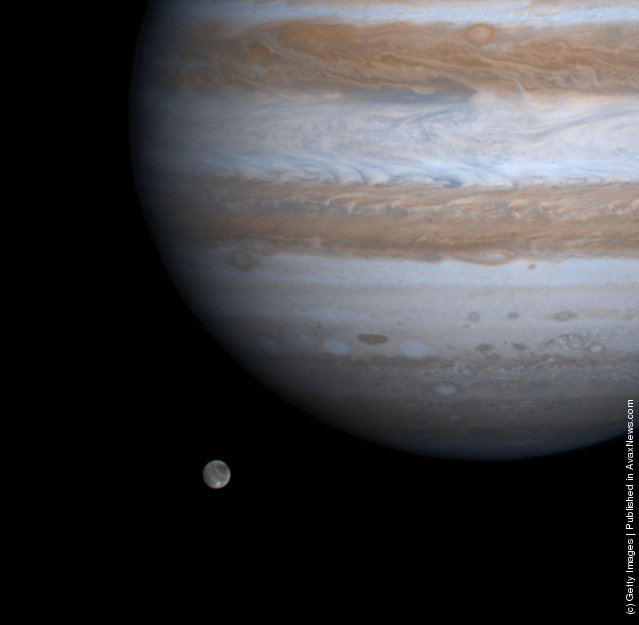
The solar system's largest moon, Ganymede, is captured here alongside the planet Jupiter in this picture taken by NASA's Cassini spacecraft, December 3, 2000. Ganymede is larger than the planets Mercury and Pluto and Saturn's largest moon, Titan. Both Ganymede and Titan have greater surface area than the entire Eurasian continent on our planet. Cassini was 26.5 million kilometers (16.5 million miles) from Ganymede when this image was taken. The smallest visible features are about 160 kilometers (about 100 miles) across. (Photo courtesy of NASA/Newsmakers)
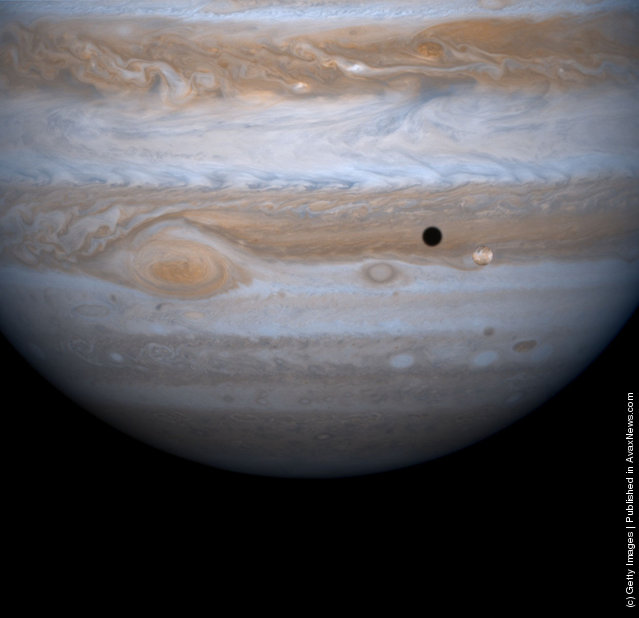
The entire body of Moon-sized Io, as it casts a black shadow, is captured here alongside the planet Jupiter in this picture taken by NASA's Cassini spacecraft, December 3, 2000. (Photo courtesy of NASA/Newsmakers)
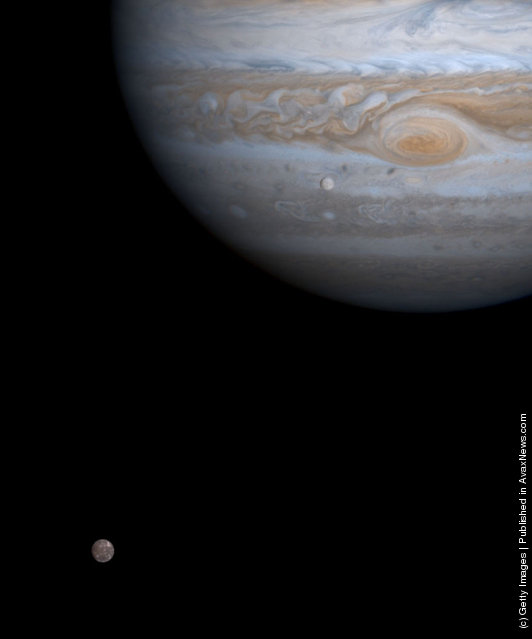
The solar system's largest moon, Ganymede, is captured here alongside the planet Jupiter in this picture taken by NASA's Cassini spacecraft, December 3, 2000. (Photo courtesy of NASA/Newsmakers)
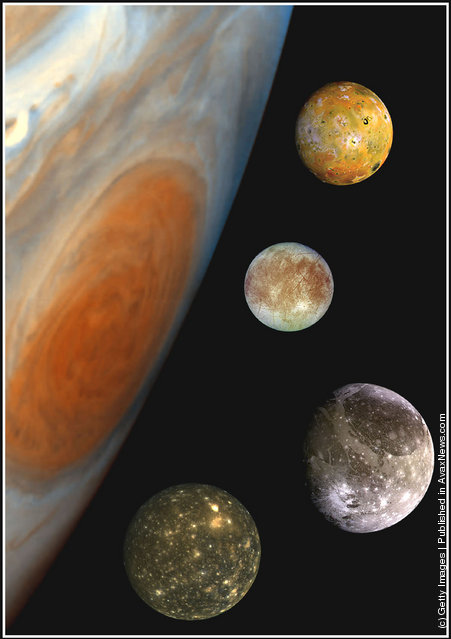
NASA announced March 16, 2001 one last mission for the Galileo space probe which includes five more flybys of the moons of Jupiter viewed here in an composite image taken by the probe before a final plunge into the crushing pressure of the giant planet's atmosphere planned for August 2003. Galileo has been orbiting Jupiter for more than five years and was launched in 1989. This “family portrait,” a composite of the Jovian system, includes the edge of Jupiter with its Great Red Spot, and Jupiter's four largest moons, known as the Galilean satellites. (Photo courtesy of NASA/Newsmakers)
23 Mar 2011 10:32:00,
post received
0 comments
